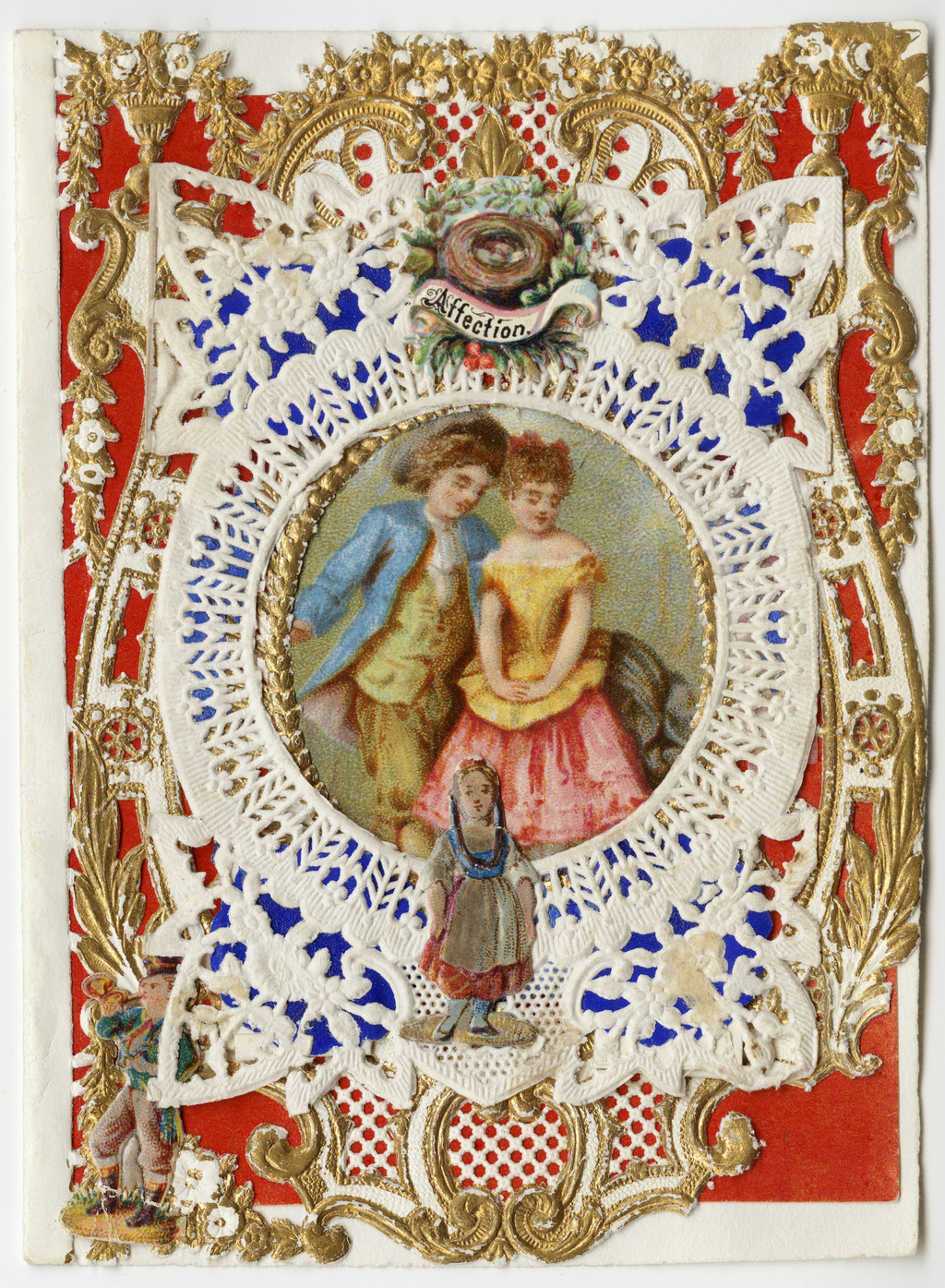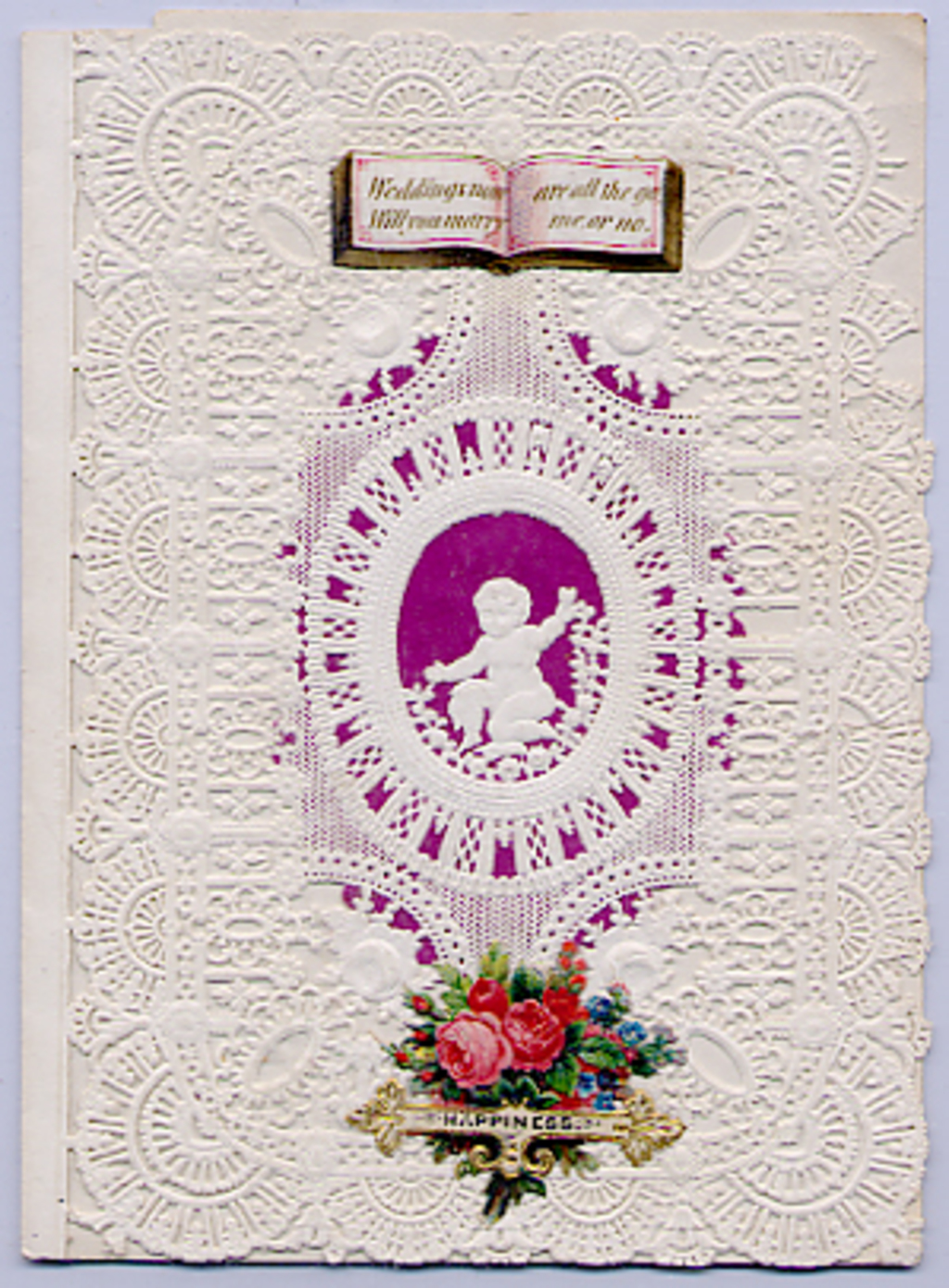To start, let’s clear up a common misperception—[Valentine’s Day was not created by Hallmark.](http://www.history.com/topics/valentines-day/history-of-valentines-day) There are three Catholic saints named either Valentinius or Valentine; all were entangled in romantic affairs that ended badly, and two of them met their fates on February 14. (One of the stories tells of a persecuted Christian who cured his jailer’s blind daughter. On the eve of his execution he sent her a note—the first Valentine’s Day card?—signed “Your Valentine.” )

In 400 AD, to honor one or more of these poor fellows, the Pope declared Feb. 14 St. Valentine’s Day. By 1400 it was common to exchange messages of love on Valentine’s Day, and by the mid-1th century small tokens like flowers and sweet treats were the norm. It wasn’t even Hallmark that first mass-produced Valentine’s Day cards in America—that distinction belongs to Esther Howland, whose ultra-feminine cut paper cards, inscribed with sentimental verse, were produced in the 1840s.
Now that the history lesson is over, let’s take a few minutes to think about the estimated $19 billion that Americans will spend on the holiday this year.
Offers.com conducts a yearly survey on Valentine’s Day purchase intentions and the results are illuminating. [In 2015 the survey found](http://www.offers.com/blog/post/valentines-survey/#closed-modal) that about half of the 2000+ respondents who planned on celebrating the holiday did so because they wanted to spend quality time with their loved ones. (Twelve percent of men celebrated because they felt obligated, and 13 percent of women celebrated out of social pressure, but let’s not take a cynical attitude yet.)
The #1 ranked gift, the gift that most people said they wanted, was a vacation with their partner. [In this year’s survey,](http://www.offers.com/blog/post/valentines-survey/#closed-modal) the #1 ranked dream gift is still a vacation—though last year’s second most desired gift, dinner out, was replaced this year with… cash. Sad face.
But back to the idea of a couples vacation. The preference for a gift of time spent together, rather than material things, is interesting because it denotes a genuine desire to reinforce bonds of love and intimacy.
Marketing professor Cassir Mogilner and management professor Cindy Chen co-authored a paper about the power of experiential gifts to connect people socially. The researchers conducted experiments that determined that…
“When recipients receive an experience, regardless of whether they share in that experience with the gift-giver, they feel more connected to the gift giver as a result of it, compared to receiving a material gift.”
They clarify that the receiving of the gift evokes basically the same response—but when the experiential gift is being lived, emotions run higher than they do when the material gift is being used, and emotions are what connect us to other people.
Most of us can’t afford to take our sweetie to Tahiti, unfortunately, no matter how much we want to or how good it might be for our relationship. In fact, on average, each of us will spend, on average, only $45 on Valentine’s Day gifts. Never fear—women will happily settle for jewelry, according to the survey, and men are content with a heartfelt card. (Aww.)
Well, here’s a tip from us to you: wrap your gift, whatever it may be, in an experience that the two of you can enjoy together—like a scavenger hunt with a sparkly ending.





